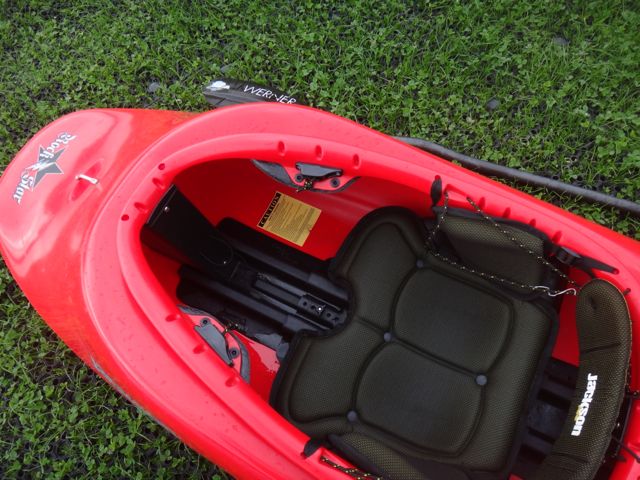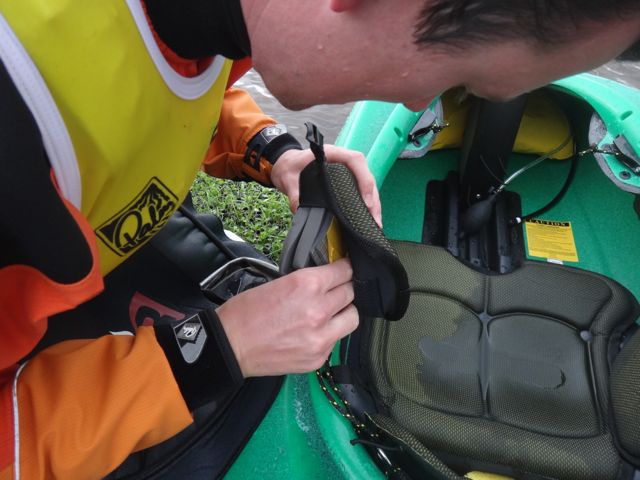The plastic seat most manufacturers install in their kayaks is molded to generic size even if the kayak is available in several different sizes. To get the most of any kayak design it is important that it fits you well. This means that all contact points – seat base, seat sides, back rest, foot rest and thigh braces should be adjusted/customised to fit your body. In this post I’m going to concentrate on the seat and what you can do to improve fit.

Seat Pad
Even if your kayak is provided with a fancy seat padding system you should assess whether or not it fits you well and customise accordingly.
Thin closed cell foam (like sleeping mats) or rubber seat pads are a great resource and if used correctly can make a huge difference to your comfort when in the boat and the way in which the boat behaves. Self Adhesive foam matting is also available online from car audio stores who sell it as sound deadening material, I’ve used this a fair bit in both canoes and kayaks. It works very well.
Using extra/padded material on the seat may help prevent leg numbness by spreading your weight over broader parts of your butt, while simultaneously increasing the friction between you and your seat. Remember that “thin” is an important word when selecting/building seat pads. Raising your centre of gravity too high could make it harder to balance in your boat and ultimately harder to roll, although cartwheels etc may become easier to initiate. That said smaller paddlers who sit deep within a boat can use this technique to lift themselves that little bit higher which can improve freedom of movement. I have found that adding additional layers of material at the front edge of the seat will also raise your legs and aid you in wearing the boat as opposed to simply sitting in it.
Hip Pads
Your hip pads provide one of the main contact points between you and your boat. They help “lock” you in and prevent you moving aorund inside of the kayak. Most manufacturers are now providing hip pad systems that can be customised in seconds which is great if you paddle all year round and move from shorts in the summer to several thermal layers in the winter. You don’t have the fuss of ripping glued pads out just to accommodate a change in clothing thickness.
I have moved away from glued in pads for this very reason. I do however customise the shims that fit inside of my hip pads by adding thing layers of foam to create a tapered shim which has more padding at the top/front.

One of the biggest complaints about spending a long time sat in a kayak is numbness in your legs/feet. Numbness in your legs can often be traced back to the size or position of your hip pads as the pad is most likely creating a pressure point that restricts blood flow. Nine times of ten the solution to this is to move the hip pads back a centimetre.



Leave a Reply